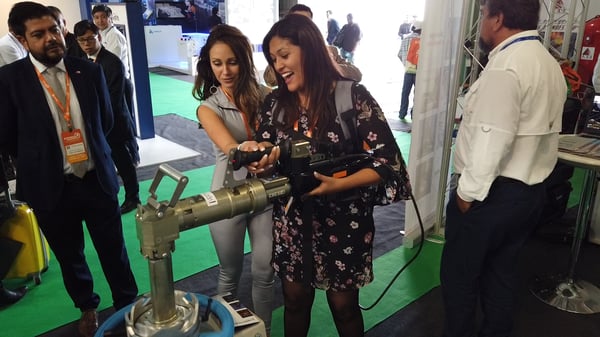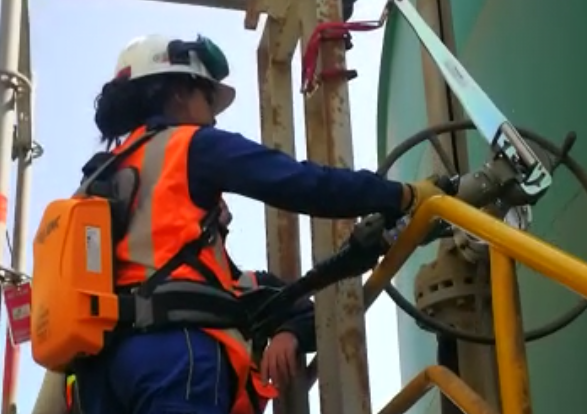26 September 2019
Along our journey to help companies with the safety of their operators and their valves, we have crossed the way of the women working in mines. They represent in Australia only 18% of the minerals industry workforce, where the rate is usually 45%.
Most of the women included in the 18% are working in the corporate side of mines and only 3% work in the mine sites and minerals processing operations. This alarming number can be explained by several issues such as:

The Women and Gender Equity Ministry of Antofagasta in Chile trying our portable valve actuator for mines
When contacted by mining companies, they explained us that there were two big categories of valves in the mines:
For this last category it was a great waste of money to instal fix actuators on each and every valves. So they were looking for a way to operate those valves safely and efficiently by any worker, men or women.
There was a clear desire from the companies we have worked with to open the operational side of mines to women, some of them even have the goal to achieve a 50/50 gender rate by 2020.
In order to achieve this equality, studies have been carried out to analyse the impact of the culture, structures, processes and tools already in place in order to provide a more gender inclusive work environment.
We can observe some results of that change for a better gender equality such as the increase in dedicated programs for women to get operational roles, a gender awareness for male employees and also adapted gender tools. Indeed even if theoretically men and women can have the same roles, in practical they can’t hold the same strength for as much time and it can be incapacitating.
Modec modestly contributed in this great project thanks to its portable valve actuator that enables women to operate all the valves present in the mines that transport water, copper concentrate, wastes …
 Woman in mine in Chile operating a valve with Modec's electric portable valve actuator
Woman in mine in Chile operating a valve with Modec's electric portable valve actuator
The portable valve actuators also responded to two other problematics:
Alternative growth strategies such as the gender equality in mining proved to be the path for a gender parity inside mines and the result being the achievement of better safety, better production, as well as doing the right thing. Find out more about the portable valve operators downloading the case studies:
+ 33 (0) 4 75 40 27 15
sales@modec.fr
ZI Sirius Quatre
80, allée René Higonnet
26760 Beaumont-lès-Valence, FRANCE
185 Alewife Brook Parkway
#210
Cambridge, MA 02138, USA
11111 Katy Freeway suite
#910
Houston, TX 77079, USA
© Alle Rechte vorbehalten - modec - Verwirklichung : ARKOD